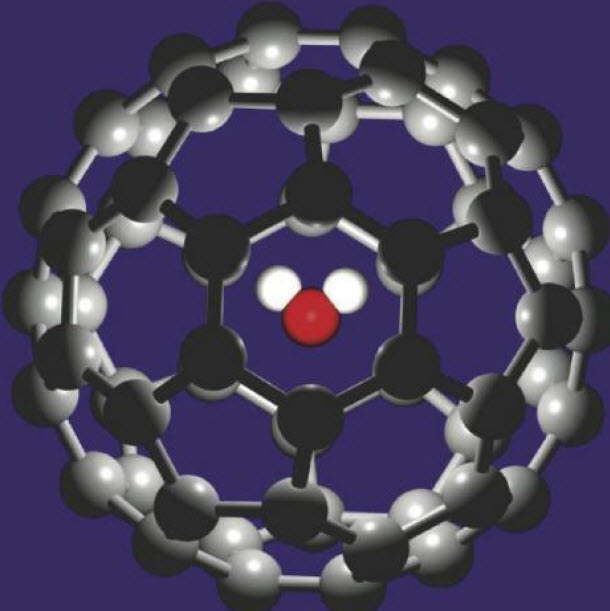Nanotechnology breakthrough may improve drug delivery
May 8, 2013

Model showing a single water molecule captured inside a fullerene C60 molecular structure (credit: F. L. Bowles/Univ. of California, Davis)
Columbia Engineering researchers have developed a technique to encapsulate a single water molecule inside a buckyball (C60) molecular structure.
Using computer modeling, they discovered that the resulting structure responds in a surprising way to an electric field: the whole structure can be driven in either direction through a narrow channel, with adjustable transport velocity
The researchers believe their discovery could have practical applications, such as more effective ways to control drug delivery.
Buckyballs (more formally known as Buckminsterfullerenes, or fullerenes), are spherical, hollow molecular structures made of 60 carbon atoms. They have a diameter of about 1 nm — 6,000–8,000 times smaller than a red blood cell.
Because of their relative non-toxicity to the human body, their hydrophobic core (which keeps water-soluble substances trapped), and their covalent nonpolar bonds (don’t interact electrically with other molecules), buckyballs are a perfect container for delivering drug molecules, explains Xi Chen, associate professor of earth and environmental engineering, who led the research. They could also have other nanotech and biotech applications.
Since the discovery of C60 in the 1980s, scientists have been trying to solve the challenge of controlling a single C60 molecule. Several mechanical strategies involving AFM (atomic force microscopy) have been developed, but these are costly and time-intensive. The ability to drive a single C60 through a simple external force field, such as an electrical or magnetic field, would be a major step forward.
This research was funded by the National Science Foundation and DARPA (Defense Advanced Research Projects Agency).